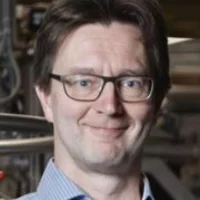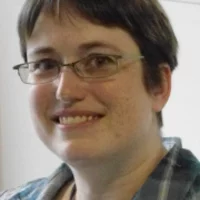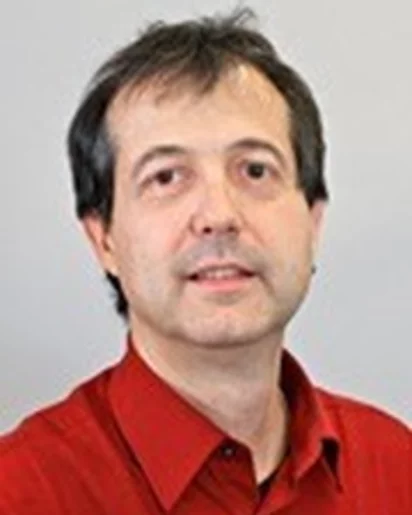Biography
Urs Staub is the leader of the Microscopy and Magnetism group that is part of the Condensed Matter Laboratory within the Photon Science division. He studied physics at the ETH in Zürich, and made his PhD in the Laboratory for Neutron Scattering at ETH/PSI in the field of rare earth magnetism in cuprate superconductors. He received a fellowship from the Swiss National Science Foundations for postdoctoral research studies in the f-electron chemistry group at the Argonne National Laboratory in the US. There he complemented is expertise in neutron scattering with synchrotron based x-ray diffraction and x-ray absorption. He then returned to PSI to the neutron group, where a after short period of time he then moved to the Swiss Light Source Project, which was later funded and realized. He obtained soon after a staff scientist position. Later he took over the Microscopy and Magnetism group. At the SLS he built a resonant soft x-ray scattering endstation for which he pioneered polarization analysis and powder diffraction using resonant soft x-ray scattering. He has been a member of several proposal review panels and advised several funding agencies for funding proposals including early stage Sonderforschungsgesuche from the Deutsche Forschungsgemeinschaft. He also is a member of the Scientific Advisory Committee of the synchrotron SOLEIL and had been/is a member of several national competence center for research of the Swiss National Science Foundations as well as in the board of several scientific organization such as the Swiss Physical Society and the Swiss Society for Photon Science.
Institutional Responsibilities
Urs Staub is head of the Magnetism and Microscopy group in the Laboratory of Condensed Matter in the Photon Science Division. The Group consists of three independent sub-groups which perform research in the area of condensed matter and operate the X-Treme and SIM beamlines including the RESOXS endstation at the SLS. As group leader, Urs Staub is responsible for the leadership and for budget and the development strategies of the group and their members and the operated beamlines. He is also responsible for the operation of the RESOXS endstation.
Scientific Research
Urs Staub’s scientific research is currently focused on fundamental questions on the interplay of the crystal structure with the electronic and magnetic properties of advanced materials. One particular strong research area is concerned with the ultrafast dynamics of spins, electrons, orbitals and their carriers, the atoms. His particular interest is the study of mechanisms of switching domains and its fundamental speed limits, understanding novel emergent states in equilibrium and in the time domain (excited state) and how ultrafast structural electronic and magnetic phase transitions can occur. In particular, he uses ultrashort x-ray pulses created from x-ray free electron lasers for his research, looking into ultrafast dynamics that is on the forefront of the field. In addition, his interest is in coherently driving fundamental excitations in a solid, which allow him to disentangle the different couplings between the charge, spin and lattice in real time. In equilibrium physics, he mainly is interested in looking into non-standard ways to drive polarization or magnetization, e.g. drive magnetization by electric fields or polarization by magnetic fields and look into very fundamental quantum problems such as magnetic monopoles, magneto-electric quadrupoles or toroidal moments and finding ways to quantify their effects and role in advanced materials using various x-ray techniques.
Selected Publications (see below)
For an extensive overview we kindly refer you to our publication repository DORA (includes publications since joining PSI). A complete list of publications can be found here: /pub. list
Antiferrodistortive and ferroeletric phase transitions in freestanding films of SrTiO3
L. Leroy, S.-W. Huang, C.-C. Chiu, S.-Z. Ho, J. Dössegger, C. Piamonteze, Y.-C. Chen, E. Abreu, A. Bombardi, J.-C. Yang, and U. Staub,
Nano Letters 25, 765 (2025). https://doi.org/10.1021/acs.nanolett.4c05664
Epitaxially grown thin films are commonly used to strain engineer electronic properties by the choice of a substrate, and therefore do not match bulk properties (leading to properties that deviate from the bulk material). Free standing ultrathin oxide films are expected to preserve the bulk-like properties due to the absence of substrate influence. However, we show that this expectation is not fulfilled with ultrathin free standing SrTiO3, as they get ferroelectric at 80K.
Coherent Control of Rare Earth 4f Shell Wavefunctions in the Quantum Spin Liquid Tb2Ti2O7
R. Mankowsky, M. Müller, M. Sander, S. Zerdane, X. Liu, D. Babich, H. Ueda, Y. Deng, R. Winkler, B. Strudwick, M. Savoini, F. Giorgianni, S. L. Johnson, E. Pomjakushina, P. Beaud, T. Fennell, H. T. Lemke, and U. Staub,
Nature Commun. 15, 7183 (2024). https://doi.org/10.1038/s41467-024-51339-0
We have been able to coherently control orbital wavefunctions in the correlated quantum material Tb2Ti2O7, which forms an interacting spin liquid ground state. We show that resonant excitation with a strong THz pulse creates a coherent superposition of the lowest energy Tb 4f states. The coherence manifests itself as a macroscopic oscillating magnetic dipole, which is detected by ultrafast resonant x-ray diffraction. We envision the coherent control of orbital wavefunctions demonstrated here to become a new tool for the ultrafast manipulation and investigation of quantum materials.
Non-Equilibrium Dynamics of Spin-Lattice Coupling
Hiroki Ueda, Roman Mankowsky, Eugenio Paris, Mathias Sander, Yunpei Deng, Biaolong Liu,Ludmila Leroy, Abhishek Nag, Elizabeth Skoropata, Chennan Wang Victor Ukleev, Gérard Sylvester Perren, Janine Dössegger, Sabina Gurung, Cristian Svetina, Elsa Abreu, Matteo Savoini, Tsuyoshi Kimura, Luc Patthey, Elia Razzoli, Henrik Till Lemke, Steven Lee Johnson, and Urs Staub,
Nature Commun. 14, 7778 (2023). https://doi.org/10.1038/s41467-023-43581-9
Here we use time-resolved X-ray diffraction to directly access the ultrafast motion of atoms and spins following the coherent excitation of an electromagnon in a multiferroic hexaferrite. One striking outcome is the different phase shifts of p/2 and p relative to the driving field providing insight into the coupling of the driven modes. It shows that the electric field of the THz pulse drives the atomic motion thereby changing the magnetic exchange interactions, resulting in an effective magnetic field. It is than this intrinsic magnetic field that drives resonantly the spins.
Transient Non-Collinear Magnetic State for All-Optical Magnetization Switching
Sergii Parchenko, Antoni Frej, Hiroki Ueda, Robert Carley, Laurent Mercadier, Natalia Gerasimova, Giuseppe Mercurio, Justine Schlappa, Alexander Yaroslavtsev, Naman Agarwal, Rafael Gort, Andreas Scherz, Anatoly Zvezdin, Andrzej Stupakiewicz, and Urs Staub
Adv. Sci. 10, 2302550 (2023). https://doi.org/10.1002/advs.202302550
Using ultrafast X-ray spectroscopy, we resolve changes in the magnetization state induced by resonant absorption of infrared photons in Co-doped yttrium iron garnet, with negligible thermal effects. This work finds that the optical excitation of the Co ions affects the two distinct magnetic Fe sublattices differently, resulting in a transient non-collinear magnetic state. The present results indicate that the all-optical magnetization switching (AOS) most likely occurs due to the creation of a transient, non-collinear magnetic state followed by coherent spin rotations of the Fe moments.
4D Visualization of a Nonthermal Coherent Magnon in a Laser Heated Lattice by an X-ray Free Electron Laser
Hoyoung Jang, Hiroki Ueda, Hyeong-Do Kim, Minseok Kim, Kwang Woo Shin, Kee Hoon Kim, Sang-Youn Park, Hee Jun Shin, Pavel Borisov, Matthew J. Rosseinsky, Dogeun Jang, Hyeongi Choi, Intae Eom, Urs Staub, and Sae Hwan Chun
Adv. Mater. 35, 2303032 (2023). https://doi.org/10.1002/adma.202303032
Here, a femtosecond time-resolved resonant magnetic X-ray diffraction experiment is used to disentangled antiferromagnetic (AFM) and ferromagnetic (FM) Fourier components allowing a magnon trajectory constructed in 3D. A remarkable impact of photoexcitation across the electronic bandgap is directly unraveled, amplifying the photomagnetic coupling that is one of the highest among AFM dielectrics. Leveraging the above-bandgap photoexcitation, this energy-efficient optical process further suggests a novel photomagnetic control of ferroelectricity in multiferroics.
Chiral phonons in quartz probed by X-rays
Hiroki Ueda, Mirian García-Fernández, Stefano Agrestini, Carl P. Romao, Jeroen van den Brink, Nicola A. Spaldin, Ke-Jin Zhou & Urs Staub
Nature 618, 946 (2023). https://doi.org/10.1038/s41586-023-06016-5
We show experimental proof of chiral phonons using resonant inelastic X-ray scattering with circularly polarized X-rays on the prototypical chiral material quartz. Circularly polarized X-rays are intrinsically chiral and couple to chiral phonons at specific positions in reciprocal space. Our experimental proof of chiral phonons demonstrates a new degree of freedom in condensed matter that is both of fundamental importance and opens the door to exploration of new emergent phenomena based on chiral bosons.
EXCHANGE SCALING OF ULTRAFAST ANGULAR MOMENTUMTRANSFER IN 4f ANTIFERROMAGNETS
Y. W. Windsor, S.-E. Lee, D. Zahn, V. Borisov, D. Thonig, K. Kliemt, A. Ernst, C. Schüssler-Langeheine, N. Pontius, U. Staub, C. Krellner, D. V. Vyalikh, O. Eriksson and L. Rettig,
Nature Materials 21, 515 (2022) DOI:10.1038/s41563-022-01206-4
With use of time-resolved soft x-ray resonant diffraction directly determine the angular momentum transfer between different spin sublattices in the magnetization dynamics of 4f moments. The rate of this transfer channel is found to be proportional to the magnitude of the antiferromagnetic indirect Ruderman-Kittel-Kasuya-Yosida (RKKY) exchange interaction. This enables to tune the demagnetization rate of selected sublattices and the transfer rate between them, which opens the possibility to engineer such devices, either shortening or prolonging the short-lived collective spin states.
ULTRAFAST ELECTRON LOCALIZATION IN THE EuNi2(Si0.21Ge0.79)2 CORRELATED METAL
Jose R. L. Mardegan, Serhane Zerdane, Giulia Mancini, Vincent Esposito, Jérémy R. Rouxel, Roman Mankowsky, Cristian Svetina, Namrata Gurung, Sergii Parchenko, Michael Porer, Bulat Burganov, Yunpei Deng, Paul Beaud, Gerhard Ingold, Bill Pedrini, Christopher Arrell, Christian Erny, Andreas Dax, Henrik Lemke, Martin Decker, Nazaret Ortiz, Chris Milne, Grigory Smolentsev, Laura Maurel, Steven L. Johnson, Akihiro Mitsuda, Hirofumi Wada, Yuichi Yokoyama, Hiroki Wadati, and Urs Staub,
Phys. Rev. Research 3, 033211 (2021). DOI:10.1103/PhysRevResearch.3.033211
In this pilot experiment at Bernina (SwissFEL) we could quantify the number of electrons localizing on ultrafast timescale out of an “electron gas” into 4f states after photo excitation. The localization correlates with an increase of 4f states/conduction electrons hybridization and exclude that this is driven by a “coherent” volume change of the lattice, which is simultaneously tested by ultrafast x-ray diffraction. These findings trigger fundamental questions such as: What leads to the change of hybridization or what is the bottle neck for such a process?
HARD X-RAY TRANSIENT GRATING SPECTROSCOPY ON BISMUTH GERMANATE
Jeremy R. Rouxel, Danny Fainozzi, Roman Mankowsky, Benedikt Rosner, Gediminas Seniutinas, Riccardo Mincigrucci, Sara Catalini, Laura Foglia, Riccardo Cucini, Florian Doring, Adam Kubec, Frieder Koch, Filippo Bencivenga, Andre Al Haddad, Alessandro Gessini, Alexei A. Maznev, Claudio Cirelli, Simon Gerber, Bill Pedrini, Giulia F. Mancini, Elia Razzoli, Max Burian, Hiroki Ueda, Georgios Pamfilidis,Eugenio Ferrari, Yunpei Deng, Aldo Mozzanica, Philip Johnson, Dmitry Ozerov, Maria Grazia Izzo,Cettina Bottari, Christopher Arrell, Edwin James Divall, Serhane Zerdane, Mathias Sander, Gregor Knopp,Paul Beaud, Henrik Till Lemke, Chris J. Milne, Christian David, Renato Torre, Majed Chergui, Keith A.Nelson, Claudio Masciovecchio, Urs Staub, Luc Patthey and Cristian Svetina
Nature Photonics 15, 499 (2021) DOI: 10.1038/s41566-021-00797-9
Transient grating spectroscopy is a well-known tool in Laser science. In this study, we showed in this proof of principle experiment that we can use x-rays from SwissFEL to create a transient grating and used a 400 nm pulse to read out the electronic changes introduced on bismuth germanate, which revealed a reach time resolved excitation spectrum form phonons.
ORBITAL DYNAMICS DURING AN ULTRAFAST INSULATOR TO METAL TRANSITION
Sergii Parchenko, Eugenio Paris, Daniel McNally Elsa Abreu, Markus Dantz, Elisabeth M. Bothschafter, Alexander H. Reid, William F. Schlotter, Ming-Fu Lin Scott F. Wandel, Giacomo, Coslovich, Sioan Zohar Georgi L. Dakovski, J. J. Turner, S. Moeller Yi Tseng, Milan Radovic, Conny Saathe Marcus Agaaker, Joseph E. Nordgren, Stephen L. Johnson, Thorsten Schmitt and Urs Staub,
Phys. Rev. Research 2, 023110 (2020).
This is the first soft x-ray resonant inelastic x-ray scattering study that directly accesses the changes in the orbital reconstruction of an ultrafast insulator-metal transition. It investigates the transient changes of a d-d (orbital) excitation in V2O3 after photo excitation. The experiments are based on ultrashort x-ray pulses from an XFEL.
FIELD-INDUCED DOUBLE SPIN SPIRAL IN A FRUSTRATED CHIRAL MAGNET
Mahesh Ramakrishnan, Evan Constable, Andres Cano, Maxim Mostovoy, Jonathan S. White, Namrata Gurung, Enrico Schierle, Sophie de Brion, Claire V. Colin, Frederic Gay, Pascal Lejay, Eric Ressouche, Eugen Weschke, Valerio Scagnoli, Rafik Ballou, Virginie Simonet and Urs Staub,
NPJ Quantum Materials 4 60 (2019).
Here we combine resonant soft x-ray diffraction with neutron diffraction and small angle neutron scattering to investigate the magnetic field dependence of the magnetic order in a doubly chiral frustrated magnet that is also multiferroic. We find a phase transition that creates an additional polarization, which leads to an enhancement or reversal of the polarization depending on the choice of enantiomer of the chiral crystal. We can pin this change to the occurrence of an additional long wavelength magnetic ordering in the spin system. The theoretical considerations show that these langasite would have all the ingredients for the occurrence of Skyrmions on an antiferromagnetic background.
Terahertz-driven phonon upconversion in SrTiO3
M. Kozina, M. Fechner, P. Marsik, T. van Driel, J. M. Glownia, C. Bernhard, M. Radovic, D. Zhu, S. Bonetti, U. Staub and M. C. Hoffmann,
Nature Phys. 15, 387 (2019).
In this work we drive the polar soft mode in SrTiO3 with a direct THz excitation far into the non-linear regime, which results in the excitation of higher lying phonon modes (phonon up conversion) through non-linear phonon-phonon couplings. We use ultra-short x-ray pulses from an XFEL to study the atomic motions in real time, allowing us to quantify the atomic motions, which represents a significant time dependent polar distortion compared to the ferroelectric distortion related perovskites.
The ultrafast Einstein–de Haas effect
C. Dornes, Y. Acremann, M. Savoini, M. Kubli, M. J. Neugebauer, E. Abreu, L. Huber, G. Lantz, C. A. F. Vaz, H. Lemke, E. M. Bothschafter, M. Porer, V. Esposito, L. Rettig, M. Buzzi, A. Alberca, Y. W. Windsor, P. Beaud, U. Staub, Diling Zhu, Sanghoon Song, J. M. Glownia & S. L. Johnson,
Nature 565, 209 (2019).
Here, we are able to show how fast momentum from a ferromagnetic align spin system can be transferred to the lattice when the ferromagnet is excited by an ultrashort laser pulse. The momentum transfer of a laser excitation in an Fe film creates an acoustic shear wave that is followed in real time using ultrafast x-ray diffraction on an XFEL. The results show that 80% of the momentum is transfer to the lattice within 200 fs.
Ultrafast relaxation dynamics of the antiferrodistortive phase in Ca doped SrTiO3
M. Porer, M. Fechner, E. Bothschafter, L. Rettig, M. Savoini, V. Esposito, J. Rittmann, M. Kubli, M. J. Neugebauer, E. Abreu, T. Kubacka, T. Huber, G. Lantz, S. Parchenko, S. Grübel, A. Paarmann, Noack, P. Beaud, G. Ingold, U. Aschauer, S. L. Johnson, and U. Staub,
Phys. Rev. Lett. 121, 055701 (2018).
This work shows that the soft mode driven 2nd order octahedral-rotation transition in SrTiO3 can be induced on ultrafast time scale through an optical excitation. This effect can be described by ultrafast hole doping that relaxes the chemical potential and rotates the octahedra to a straight alignment, close to the cubic high temperature phase. The ultrafast octahedral rotation has been determined by ultrafast x-ray diffraction, performed at the FEMTO slicing source of the SLS.
NONLINEAR ELECTRON-PHONON COUPLING IN DOPED MANGANITES
V. Esposito, M. Fechner, R. Mankowsky, H. Lemke, M. Chollet, J.M. Glownia, M. Nakamura, M. Kawasaki, Y. Tokura, U. Staub, P. Beaud, and M. Först,
Phys. Rev. Lett. 118, 247601 (2017).
Here we show that driving the phononic subsystem in half doped manganite’s does not induce the metal-insulator transition due a scheme of non-linear phononics. When driving the IR active mode by midIR excitation, the gap closes directly through a non-linear electron phonon coupling. Experiments have used ultrafast resonant hard x-ray diffraction to study the dynamics of the orbital and charge order suppression at an XFEL.


